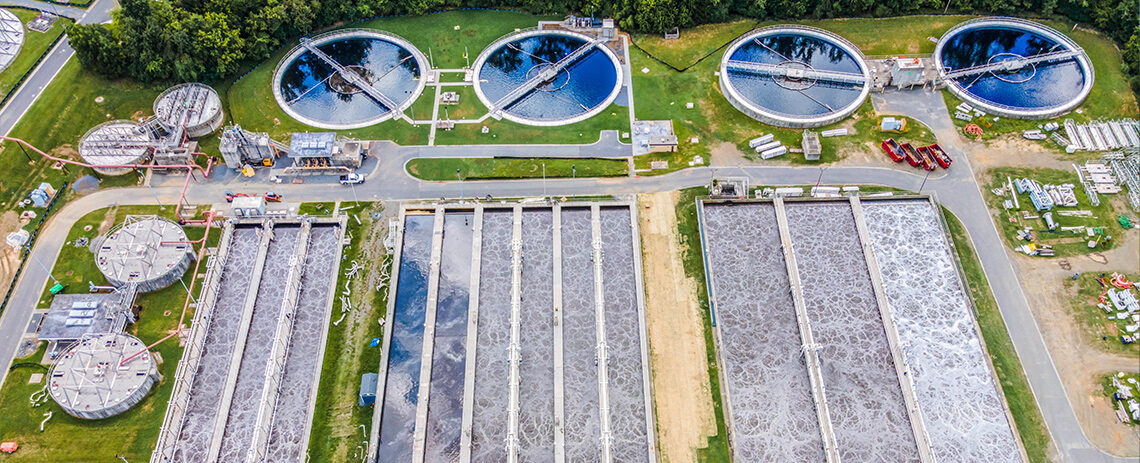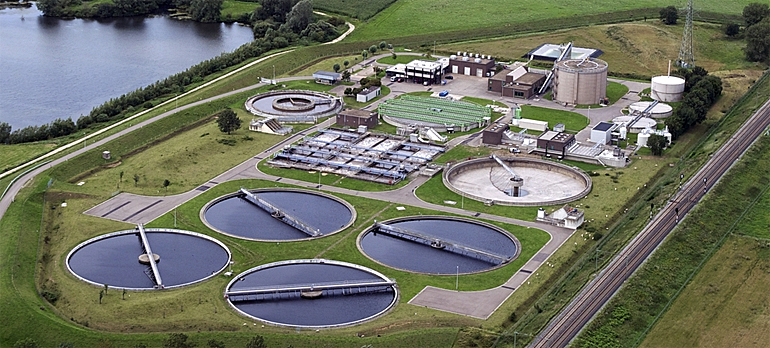Exploring Advanced Developments in Wastewater Technology
Wiki Article
Comprehending Wastewater Treatment Processes and Their Ecological Influence
The complexities of wastewater therapy processes play a crucial function in mitigating ecological challenges related to water air pollution. Each phase, from preliminary to sophisticated therapies, is designed to attend to details contaminants, eventually safeguarding both public health and wellness and marine communities. Despite technological improvements in treatment performance, substantial challenges persist, including the management of residual pollutants and the ramifications of nutrient overflow. As we check out the intricacies of these processes, it ends up being important to question how far present methods can advance to satisfy the growing demands of sustainability and environmental preservation.Summary of Wastewater Treatment
Just how is wastewater changed into a safe source for the setting? Wastewater treatment is a critical procedure made to eliminate pollutants from used water, therefore securing public health and wellness and safeguarding ecosystems. This procedure begins with the collection of wastewater from domestic, industrial, and business resources, which is then routed to treatment centers.At these centers, various physical, chemical, and organic approaches are utilized to treat the wastewater. First screening gets rid of big particles, complied with by sedimentation to separate heavier solids. Consequently, biological therapies, such as activated sludge procedures, utilize microbes to break down natural matter. These methods not only reduce contaminant degrees however additionally help with the recuperation of important nutrients.
The treated effluent can be securely released into natural water bodies or recycled for watering and industrial functions, advertising resource conservation. Furthermore, the therapy process produces biosolids, which can be repurposed as plant foods or dirt modifications, further enhancing sustainability.
Phases of Therapy Procedures
The wastewater therapy procedure generally is composed of three primary phases: initial, key, and second treatment. Each phase serves a distinct role in decreasing the contaminant lots and ensuring the effluent fulfills ecological standards prior to discharge.
The main therapy phase concentrates on the physical splitting up of put on hold solids from the wastewater. With sedimentation, larger fragments clear up at the end of sedimentation containers, creating sludge, while lighter products, such as oils and greases, float to the surface area and are skimmed. This procedure substantially minimizes the organic and inorganic tons in the wastewater.
Additional treatment is a biological procedure focused on more lowering the focus of natural matter. Various methods, consisting of triggered sludge systems and dripping filters, utilize microorganisms to metabolize organic toxins. This phase is vital for accomplishing the required biochemical oxygen need (FIGURE) reduction, ultimately resulting in cleaner effluent ready for discharge or further therapy. Each phase is crucial in protecting ecological and public health and wellness.

Advanced Therapy Technologies
Following the second treatment procedures, advanced therapy innovations play a vital function in further improving the quality of treated wastewater. These technologies are created to remove residual impurities that are not efficiently removed during main and second treatments, making certain the effluent satisfies rigorous regulatory requirements.Amongst the widely made use of advanced therapy approaches are membrane filtering, reverse osmosis, and progressed oxidation procedures. Membrane filtering, consisting of microfiltration and ultrafiltration, is effective in separating fine fragments, virus, and colloids from the water (Wastewater). Reverse osmosis utilizes semi-permeable membranes to get rid of liquified solids, resulting in high-quality water ideal for various applications
Advanced oxidation processes (AOPs) employ strong oxidants to break down natural toxins, consisting of drugs and individual care products that are resistant to traditional treatment. These techniques boost the biodegradability of intricate substances, facilitating their elimination.
An additional considerable innovation is making use of biological nutrient removal processes, which specifically target nitrogen and phosphorus, avoiding eutrophication in obtaining water bodies. On the whole, innovative therapy technologies are important for accomplishing higher levels of filtration, advertising water reuse, and protecting public health visit the website and wellness while attending to the obstacles connected with wastewater administration.
Ecological Benefits of Therapy
Many ecological benefits develop from efficient wastewater therapy processes that contribute to ecosystem health and wellness and sustainability. Primarily, these procedures dramatically lower the release of hazardous contaminants into natural water bodies, which aids keep water environments. By eliminating contaminants such as hefty metals, nutrients, and microorganisms, treated wastewater reduces the risk of waterborne conditions and promotes biodiversity in marine settings.Additionally, wastewater treatment centers commonly use innovative innovations that make it possible for water recycling and reuse. This method not only preserves freshwater sources however also lowers the need on natural water products. Improved nutrient elimination from wastewater can likewise protect against eutrophication, a process that leads to algal blossoms and subsequent oxygen exhaustion in aquatic systems.
Furthermore, efficient therapy procedures can lessen greenhouse gas emissions, specifically methane and laughing gas, which are frequently launched during neglected wastewater disintegration. By capturing and making use of biogas from anaerobic digesters, facilities can convert waste right into renewable resource, thereby adding to a decrease in nonrenewable fuel source dependence.
Difficulties and Future Fads
While the environmental benefits of wastewater therapy are clear, numerous difficulties linger that hinder ideal outcomes in this field. One significant concern is aging facilities, which often advice causes inefficiencies and boosted functional costs - Wastewater. Numerous therapy plants were developed decades earlier, and their capabilities do not align with contemporary needs, which consist of stricter regulatory requirements and greater volumes of wastewater because of urbanization
Looking ahead, there is a growing focus on resource healing and circular economy concepts within wastewater treatment. Innovations such as anaerobic food digestion, which can create biogas, and advanced purification innovations are acquiring grip. These techniques not only enhance therapy efficiency yet likewise advertise sustainability.
Eventually, dealing with these obstacles needs collaboration amongst stakeholders, financial a fantastic read investment in innovation, and a commitment to recurring study. By welcoming these patterns, the wastewater therapy market can evolve to fulfill the demands of a changing atmosphere and culture.
Conclusion
Finally, wastewater treatment processes play a vital function in boosting environmental top quality and public health. The multi-stage therapy structure, combined with advanced modern technologies, effectively alleviates pollution and advertises sustainable water management. By addressing residual pollutants and minimizing nutrition runoff, these processes contribute to the conservation of aquatic ecological communities and the reduction of greenhouse gas emissions. Continued developments and adjustments in treatment methods will be important for conquering arising obstacles and guaranteeing the sustainability of natural deposits (Wastewater).Report this wiki page